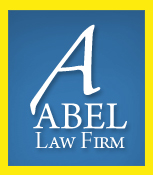Legislatively-mandated uninsured motorist insurance is valuable and necessary coverage considering the number of drivers who carry the minimum or no liability insurance. The Supreme Court has declared it is “primary” coverage and claims can be made against the UM carrier without even joining the tortfeasor. However, the threshold question is always whether a UM claim exists. UM will only apply if the injured person’s claim exceeds the liability limits of the tortfeasor. A suit against the UM carrier alone might be risky if you are not sure the claim exceeds the limits.
Options for Making a UM Claim
From Keel v. MFA Ins. Co., 1976 OK 86, 553 P.2d 153, 158-159, we learned a person having a claim against an uninsured motorist has four options: “(1) He may file an action directly against his insurance company without joining the uninsured motorist as a party defendant and litigate all of the issues of liability and damages in that one action. … (2) He may file an action joining both the uninsured motorist and the insurance company as party defendants and litigate all issues of liability and damages in one action. (3) He may file an action against the uninsured motorist without joining the insurance company as a party defendant, but give adequate notice of the filing and pendency of such action to the insurance company so they take whatever action they desire, including intervention. (4) He may file an action against the uninsured motorist and give no notice to the insurance company. Upon a trial court’s discretionary determination that no prejudice will result in litigating all of the issues in one trial, the insurer is bound by the judgment as to all issues, including liability and damages under the options described in one, two and three. Only in option four is the insurance company not bound by the judgment.” See also, Roberts v. Mid-Continent Cas. Co., 1989 OK CIV APP 92, 790 P.2d 1121, 1122 (UM carrier becomes obligated to provide benefits without the insured’s first having to seek recovery against the tortfeasor).
However, in order to have an uninsured motorist claim and the Keel options, the person must show the uninsured/underinsured status of the tortfeasor to trigger the coverage. For example, in Gates v. Eller, 2001 OK 38, 22 P.3d 1215, 1219-1220, the passive act of allowing the statute of limitations to run against a sufficiently-insured tortfeasor did not convert the adequately-insured person into an uninsured motorist. “Our uninsured motorist statute imposes upon an injured insured seeking to recover uninsured motorist insurance benefits the burden of proving the uninsured status of the tortfeasor’s motor vehicle.” Id. at 1218. Gates cited Brown v. USAA, 1984 OK 55, 684 P.2d 1195, for the proposition that “… an injured insured who is seeking to recover under an uninsured motorist endorsement has the burden of proving the other motor vehicle was uninsured, unless the insurer contractually assumed the burden of proving the other motor vehicle was insured.” Gates, 22 P.3d at 1219 (f.n. 14).
In contrast, if the tortfeasor is actually underinsured, UM claimants may passively allow the statute of limitations to expire against the tortfeasors and collect their damages from their UM insurer. Uptegraft v. Home Insurance Company, 1983 OK 41, 662 P.2d 681, 686-687; Burch v. Allstate Insurance Co., 1998 OK 129, 977 P.2d 1057, 1069.
Establishing Uninsured Status
Uninsured motorist coverage is mandated by statute, which defines “uninsured motor vehicle” to include “… an insured motor vehicle, the liability limits of which are less than the amount of the claim of the person or persons making such claim, regardless of the amount of coverage of either of the parties in relation to each other.” 36 O.S. §3636(C). The question becomes: “What is the value of the claim?”
In Lamfu v. GuideOne Ins. Co., 2006 OK CIV APP 19, 131 P.3d 712, 713, the UM insurer evaluated the plaintiff’s claim at less than the tortfeasor’s liability limits, but the plaintiff elected to proceed solely against the UM carrier. After the statute of limitations ran against the tortfeasor, the UM carrier’s evaluation remained less than the tortfeasor’s limits. Plaintiff argued since his “claim” (his demand) had been greater than policy limits, the UM carrier was obligated to pay the “undisputed value” of the claim, i.e. the carrier’s initial evaluation. Id. at 714. The Court of Civil Appeals affirmed summary judgment in favor of the insurer because the plaintiff had not shown the tortfeasor to be underinsured: “The burden of proving the uninsured status of a motor vehicle and thus, inherently in this case, the amount of damages, falls upon Plaintiff …” Id. at 714-715. “To do so, it is not necessary for the insured to obtain an adjudication of damages against the tortfeasor before proceeding directly against the UM carrier.” Id. at 715. Somehow, the injured party must “… assure ‘that the insurer receive sufficient facts which fully apprise the insurer that the owner or operator of the other vehicle involved in the accident was uninsured or underinsured, that he was at fault, that such fault gave rise to damages and establish the extent of those damages.’” Id. A “claim” requires proof of the extent of the damages, i.e. proof necessary to establish a prima facie case. Id. The court concluded, “In order to trigger the obligation to pay UM benefits under § 3636, we therefore hold the ‘claim’ must be supported by evidence establishing a prima facie right to recover under the UM provisions of the policy, and that the bare allegation of the existence of unliquidated damages for pain and suffering is simply insufficient.” Id. The uninsured status of the tortfeasor is one of the elements of the prima facie case – one of the “preconditions for loss under the uninsured motorist coverage …”. Id.
Discovering Policy Limits and Evaluating the Claim
It is usually easy to find out if drivers are totally uninsured. On the other hand, it is difficult to determine if they are underinsured because some adjusters will not divulge that information until a lawsuit is on file against the tortfeasor. You need to know only the tortfeasor’s basic liability policy limits. Excess liability policies are not included in determining liability limits of an insured motor vehicle and its status as an underinsured motor vehicle. GEICO General Ins. Co. v. Northwestern Pacific Indem. Co., 2005 OK 40, 115 P.3d 856, 858-859.
Even if you know the policy limits, how can you know for sure if your client’s damages are greater than the liability limits? “In Oklahoma, compensatory bodily injury damages include lost past wages, pain and suffering, physical impairment, disability, disfigurement, expected future medical expenses, and a loss of future earnings.” Lamfu, 131 P.3d at 716. The UM carrier must be provided documentation of all such losses. Id. The claim must be one “reasonably supported by evidence of the actual losses sustained, not just a conclusory allegation.” Id. In Lamfu, the UM carrier’s evaluation of the claim in an amount less than liability limits was not an offer of an undisputed amount, but a denial of coverage. The Plaintiff sued the UM carrier for that amount after the statute of limitations had run against the tortfeasor. “In failing to dispute this amount, Plaintiff conceded that his damages were less than [the tortfeasor’s] liability coverage and precluded satisfying the condition that [the tortfeasor’s] vehicle was of uninsured status.” Id. The court agreed with Gates that allowing the statute of limitations to run against an adequately-insured driver did not convert him into an uninsured motorist. Id.
The reason for the conditions precedent is obvious. If claims against UM carriers were allowed when there was not truly an uninsured-motorist situation, it would lead to “absurd results that thwart the obvious legislative purpose” of UM. Id. As stated in Burch, 977 P.2d at 1063, “The purpose of an uninsured motorist provision in an insurance contract is to protect the insured from the effects of personal injury from an accident with another motorist who either carries no insurance or has inadequate coverage.”
Primary Coverage when There Is a UM Claim
Burch is the case that clarified that UM is primary coverage – coverage you can access directly without bothering to sue the tortfeasor. “… [A]n uninsured motorist carrier is liable for the entire amount of its insured’s loss from the first dollar up to the UM policy limits without regard to the presence of any other insurance.” Id. at 1058. However, Burch did not change the burden of establishing uninsured status. Gates, 22 P.3d at 1219 “To the contrary, Burch observed that an injured insured must demonstrate that the preconditions for loss under the uninsured motorist coverage exist before he or she can recover under the primary uninsured motorist coverage.” Id. Noting an uninsured vehicle is either totally without insurance or with insufficient insurance to cover a particular claim, the court stressed “… the UM carrier’s obligation to its insured is identical regardless of the underlying reason for the classification of the vehicle as uninsured. We hold § 3636 mandates that when the preconditions for the loss under uninsured motorist coverage exist, an uninsured motorist coverage carrier is obligated to pay the entire loss of its injured insured from the first dollar up to the policy limits.” Id. at 1064 (emphasis added).
The Practical Result
Although you don’t have to litigate a claim in order to establish its value, if there is a question about whether the tortfeasor is underinsured, it is prudent to sue him or her and not rely solely on uninsured motorist insurance. If the UM carrier evaluates the claim as less than the liability limits, it is effectively denying UM coverage and you don’t want to be suing the UM carrier alone in that situation. Forget about passively allowing the statute of limitations to run. You may lose the only insurance available: the liability policy.
— Lynn B. Mares


